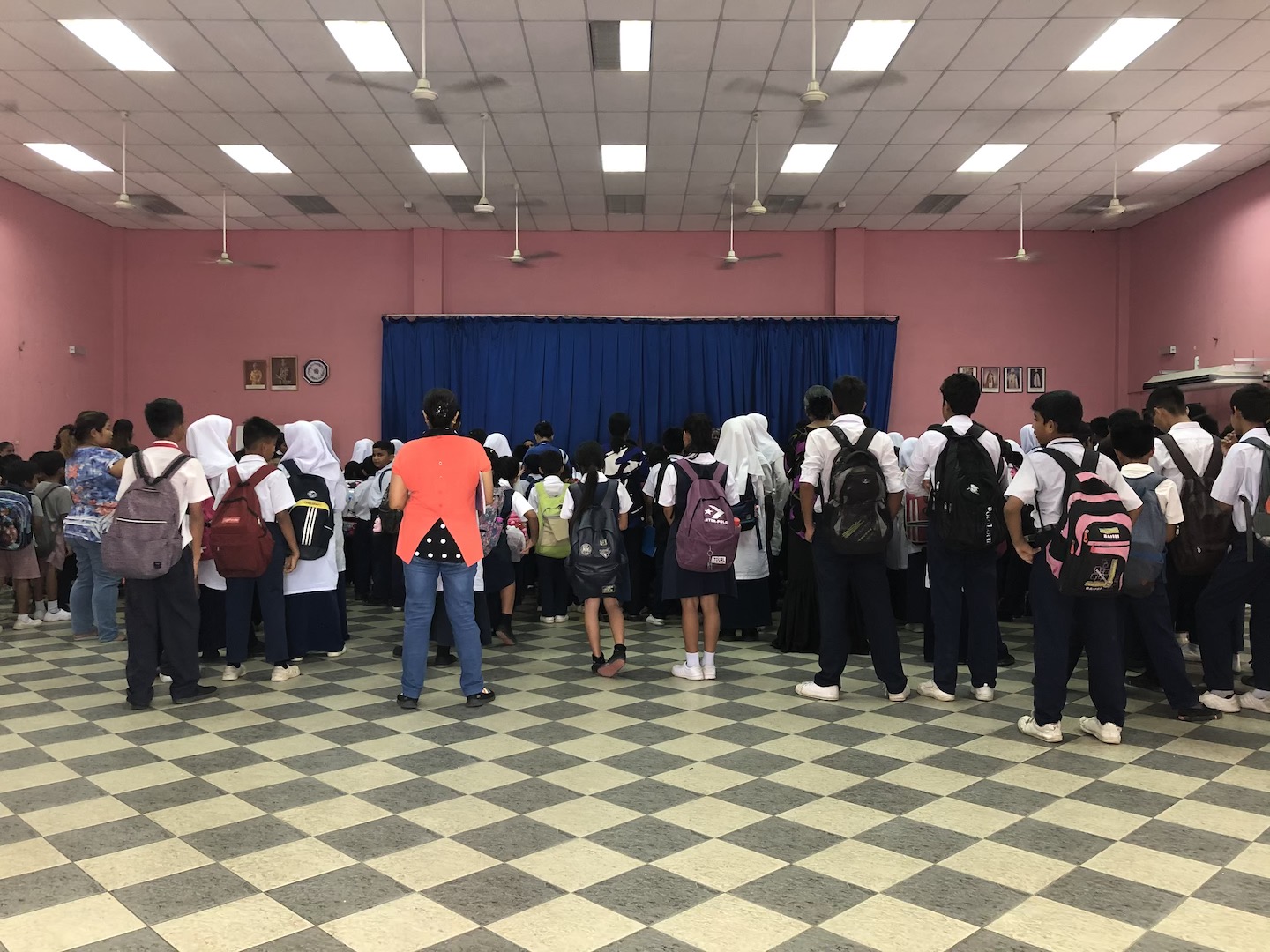
There are an estimated 90,000 Rohingya refugees and asylum seekers living in Malaysia. Tang Shin Yong (right) and another volunteer ministering to an elderly Rohingya lady. All photos by Geraldine Tan.
Life in the Rohingya refugee camp at Cox’s Bazar, Bangladesh, is bleak. With no access to jobs and education, and the possibility of forced repatriation to Myanmar, it is no wonder many Rohingya are willing to risk their lives making the perilous journey to Malaysia instead.
It is a journey that Banu, 62, is familiar with.
“My only hope then was that God can send us to a place where we can live in peace, without any fear.”
She and her late husband, Ali, had escaped Rakhine in 1978 with their six-year-old son in tow after Burma (as Myanmar was formerly known) launched “Operation Dragon King”, a large-scale military crackdown on the Rohingyas which stripped them of their citizenship. The violent campaign, similar to the one witnessed in 2017, saw about 200,000 flee to Bangladesh.
Both their fathers were arrested earlier that year and when Ali went to visit them, they urged him to take his wife and child and leave Rakhine as it was no longer safe. The young family fled to Yangon and onwards to Thailand. They stayed there for two years before crossing into Malaysia.
The early days were tough. She recalled the time they rented a house and had put down the security deposit and paid the first month’s rent. They moved in but were arrested that very night as their landlord had reported them to the authorities. Overnight, they lost whatever meagre belongings they had with them.
The family eventually found odd jobs and even start a small business selling knick-knacks, which helped put a roof over their heads and food on the table. The small family of three soon become five.
Life was hard but at least they were alive. “My only hope then was that God can send us to a place where we can live in peace, without any fear.”
One generation on
“I can’t imagine how if we were still living in that condition. I will die already!” exclaims Rukiah, 30, as she listened to her mother’s recollections. Her family is among the estimated 90,000 registered Rohingya refugees and asylum-seekers living in Malaysia, according to the United Nations High Commissioner for Refugees (UNHCR).
Life in Malaysia has improved drastically in her time.

Thanks to changes to in Malaysian law, Rukiah was able to find a job teaching Bahasa Melayu in ElShaddai Refugee Learning Centre.
Besides enacting laws to protect the rights of refugees, the government now allows refugees and asylum-seekers registered with the UNHCR to find gainful employment. Because of that, Rukiah was able to secure work teaching Bahasa Melayu at ElShaddai Refugee Learning Centre (ERLC).
There are more than 170,000 refugees living across the Causeway – one of the largest refugee population in Southeast Asia.
Today, the family is also able to rent a small house in a village without fear of being evicted. They have even set up a mini provision shop to supplement their income.
Unlike most host countries which set up settlement camps for refugees, those in Malaysia set up home in any low-cost housing they can afford. Which may explain why it may not be immediately obvious that there are more than 170,000 refugees living across the Causeway – one of the largest refugee population in Southeast Asia.
While living conditions have improved leaps and bounds since Banu’s time, there are still enormous needs within the refugee community.
Missions across the causeway
With enormous needs come an enormous opportunity, says Andrew Ng, 61, executive director for ElShaddai Centre Berhad (ECB). It was set up in 2008 to run ERLC, a school endorsed by UNHCR to provide education to refugees.
While life in Malaysia is better compared to that of Cox’s Bazar, the needs of refugees are no different – healthcare, employment, education.
It is an opportunity for the Church to be a tangible and practical expression of God’s love.

Some of the churches in Klang have opened their doors to the refugees living among them. ElShaddai Refugee Learning Centre has been running a primary school on the premises of St Barnabas Church since 2008.
Through interacting with the young refugee children and their families, ECB gradually widened its scope of work to include mobile clinics, skill development and starting a social enterprise to help these families become financially independent or partially support their family.
“The Church has to rethink how we do missions because mission is now as close as where we are,” says Ng, who is also a deacon at Chinese Methodist Church in Klang. He urged more Singapore churches to partner in this work.
“Just cross the Causeway and you could already reach nations that you may never have a chance to reach … In ElShaddai alone, we have students from 18 different countries and many come from unreached people groups.
“We begin to realise it’s not so much about us doing the work. We want to mobilise the Singaporean and Malaysian churches to be aware of the changing trend of the World Mission.”

There are more than 40,000 refugee children below the age of 18 in Malaysia and ElShaddai Refugee Learning Centre is one of the 130 informal refugee schools supported by the local UNHCR office.
It is a view shared by Interserve board member, Tang Shin Yong, who also co-founded HealthServe. Through divine appointments, Tang found out about Ng’s work in June 2015 and has been journeying with some refugee families since.
“Just cross the Causeway and you could already reach nations that you may never have a chance to reach.”
“If you want to reach out to refugees, start from the refugee families,” advises Tang. “The issues can be very complex and we need to have a holistic approach – how to strengthen the fibre of the family, how to strengthen family unity, the bonds within family members.”
For those who are keen to serve, start small.
“Reach out to one refugee family at a time, for the consistency, the depth – the journey with them counts in the Lord’s sight. I’m reminded by the Lord’s saying: ‘If you do to the least of this brother, you doing unto me.’ (Matthew 25:40)
“I think that’s what the Lord requires of us, nothing less.”
Ng says: “If you can’t love them, don’t come because you will be challenged as the needs are humongous. But this is how Christ would incarnate, in a bodily form. If they don’t see the love in us, it is very hard for them to understand what the Word of God is trying to say.”
“The Church needs to respond”: Relief Singapore’s Jonathan How on the Rohingya crisis in Cox’s Bazar
We are an independent, non-profit organisation that relies on the generosity of our readers, such as yourself, to continue serving the kingdom. Every dollar donated goes directly back into our editorial coverage.
Would you consider partnering with us in our kingdom work by supporting us financially, either as a one-off donation, or a recurring pledge?
Support Salt&Light


